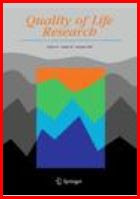
PsychCentral.com - Alcohol Ups Aggression in Present-Focused Drinkers
Getting drunk increases aggression in people who have one particular personality trait: the inability to consider the future consequences of current behavior, according to new research.
Read more
MarketWatch (USA) - Center on Alcohol Marketing and Youth (CAMY) Charts Alcohol Industry's Digital Marketing, Questions Adequacy of Industry's Self-Regulation to Avoid Exposing Youth to "Alcohol Experience"
The Center on Alcohol Marketing and Youth (CAMY) at the Johns Hopkins Bloomberg School of Public Health today released a four-part YouTube movie ( http://www.youtube.com/user/JohnsHopkinsSPH ) charting the alcohol industry's push into digital marketing and raising questions whether the industry's self-regulation is adequately protecting underage youth from exposure to the "alcohol experience" available on social marketing platforms such as Facebook, YouTube, and Twitter.
Read more
Reuters (Philippines) - Philippines to review alcohol taxes after WTO ruling
The Philippines will review taxes on foreign alcohol products following a World Trade Organisation decision that the current system was discriminatory and the trade minister said the government will look at how to assist affected local distillers.
Read more
Telegraph.co.uk (UK) - Hidden alcohol problem among elderly
A growing number of older people are exceeding the recommended alcohol limit, many of whom only develop harmful drinking habits when faced with bereavement, tedium and other stresses of retirement.
Read more
aidsmap - Alcohol increases desire for sex without condoms: systematic review
Alcohol consumption has an impact on the intention of individuals to have unprotected sex, according to the results of a systematic review and meta-analysis published in the journal Addiction.
Read more
Scottish Daily Record (Scotland) - Plan for minimum alcohol prices will be contested in court admits Nicola Sturgeon
LEGISLATION for a minimum unit price for alcohol is "almost certain" to meet a legal challenge, the Health Secretary has said.
Read more
Scotsman (Scotland) - One in seven children ‘drinking regularly’
THE scale of Scotland’s under-age alcohol problem was laid bare yesterday when a new survey showed that more than one third of 15 year-olds and one in seven 13 years olds admitted that they had taken a drink in the previous week.
Read more
Vibe Ghana (Ghana) - Chief alarmed at rate of alcohol consumption in Builsa
The Nasuing Naab, Alex Azantilow, Regent of the Builsa Traditional Area, on Wednesday said alcohol consumption among the people is assuming an alarming proportion and affecting the manpower of the area.
Read more
The Stir - Alcohol Hits Women Way Harder Than Men
You know how your husband can drink a few beers and not even blink, whereas you're wearing the proverbial lampshade after only a glass and a half of wine? A new study has underscored what we all know to be true: Alcohol affects women much more dramatically than it does men.
Read more
The New Age Online (South Africa) - Presidential adviser’s blood ‘free of alcohol’
“The police are in sh*t. Blood sample results are back, alcohol in my blood: zero. I told them, banyile ngekhe ndibayeke.” So tweeted President Jacob Zuma’s adviser, Zizi Kodwa, on Tuesday.
Read more
Daily Mail (UK) - A taste for champers! Cuts-hit BBC ran up a £366,000 bill on alcohol in five years
BBC executives were last night accused of ‘living it up on the licence fee’ after it emerged that the Corporation has spent £366,000 on alcohol in the past five years.
Read more
Irish Times (Ireland) - No cheery side to excessive drinking at Christmas time
HOW OFTEN have you heard it said that drinking is part of our culture, part of our social norm, part of our economy? There’s reality and truth in this. You’re not a bad person if you like a drink, or for that matter if you don’t, and the Irish pub is a venue to be preserved as part of our natural heritage.
Read more
Medscape - Help for Drinking Unpopular During Minor Injury Treatment
Patients presenting at minor injuries units (MIUs) in the United Kingdom may often fit the profile of "hazardous"" drinkers, making such settings ideal for interventions and advice to support problem drinking, according to a pilot study published online December 21 in Emergency Medicine Journal.

































